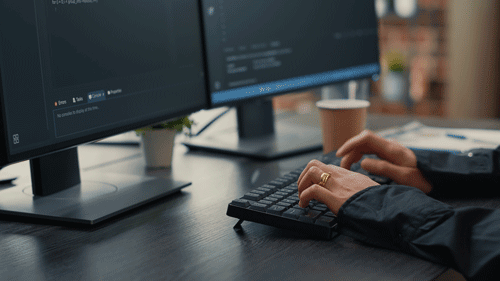Containerization has emerged as an effective way to secure your code and its dependencies. It’s the process of packaging applications into standardized units called containers, which are isolated from one another and can run independently on different systems. However, containerization isn't a silver bullet - it must be combined with other security measures to ensure your code and its dependencies are properly secured. One of these security measures is securing your codes and its dependencies. This task includes protecting the code, critical system files, and other sensitive data.
To expound on this, here are some key steps that you can take to secure your code and its dependencies:
1. Always use the latest version of your code and its dependencies.
Staying updated on the latest versions ensures that any known vulnerabilities of older versions are addressed. Additionally, it's important to ensure that all components are patched for any new security threats or updates available.
2. Use source control to track and monitor changes.
When using source control, you can track any changes made to your code and its dependencies. It's also possible to audit those changes and investigate any suspicious activity on the system in order to identify potential security issues.
3. Ensure that all code is thoroughly tested before it is deployed.
Deployment of new code and its dependencies should always include a rigorous testing process. This can help identify potential vulnerabilities and ensure the code is free from malicious threats. Aside from that, testing can also ensure that the code and its dependencies meet all security requirements set by your organization.
4. Securely store code files and credentials in a safe location.
Nothing beats the importance of securing your code files and credentials in a safe location. This could be an encrypted file or a secure cloud storage solution. Doing this will help prevent unauthorized access to the code base, making it harder for malicious actors to obtain sensitive information.
5. Utilize automated scanning tools to identify and address vulnerabilities quickly.
Automation has come a long way when it comes to security, and automated scanning tools are no exception. Utilizing these tools can help identify vulnerabilities faster and address them promptly.
6. Restrict access to critical system files, such as SQL databases, to authorized personnel.
This may sound cliche, but it is important to restrict access to critical system files, such as SQL databases, to authorized personnel only. Doing this will ensure that malicious actors are unable to gain access and compromise your code or its dependencies.
7. Implement secure coding practices to prevent attackers from exploiting vulnerabilities in the code.
Input validation and output encoding are just two secure coding practices that can help prevent attackers from exploiting vulnerabilities in your code. These can be used to detect and protect against malicious input and output and prevent SQL injection attacks.
8. Regularly review your system logs for suspicious activity or attempts to access sensitive data.
Last but not least, it is important to review your system logs regularly and investigate any suspicious activity. This can help you detect any malicious attempts to access sensitive data and identify any possible vulnerabilities in the code or its dependencies.
These steps can help ensure that your code and its dependencies are properly secured against malicious attacks. Following these steps can help protect your code and its dependencies from potential threats.
In addition to the measures outlined above, it is important to keep in mind that security is an ongoing process and should not be taken lightly. Working with a trusted security partner effectively ensures your code and its dependencies are properly safeguarded against any potential threats.





No Comments Available...